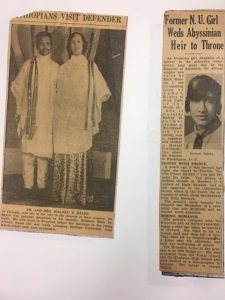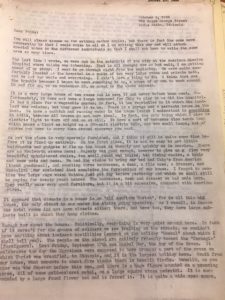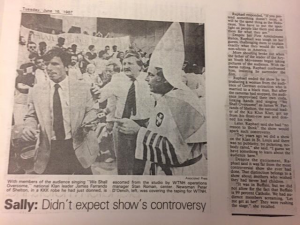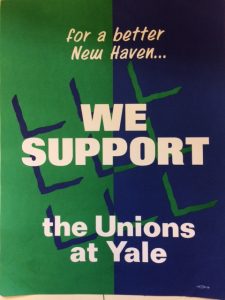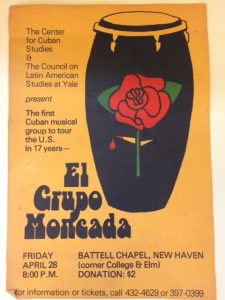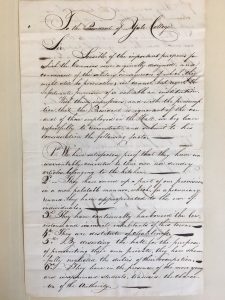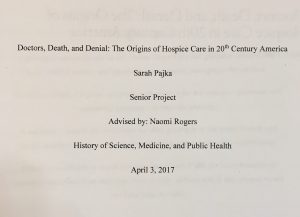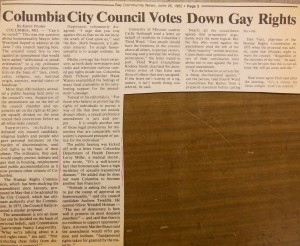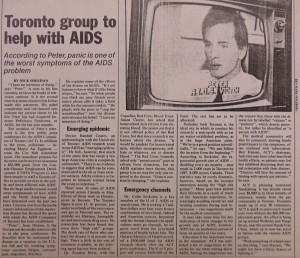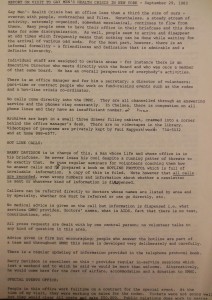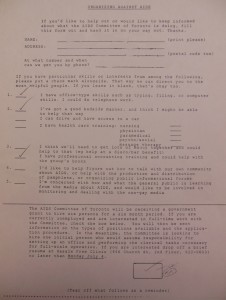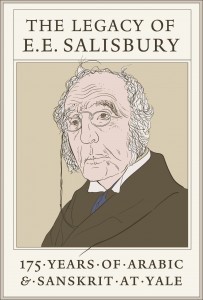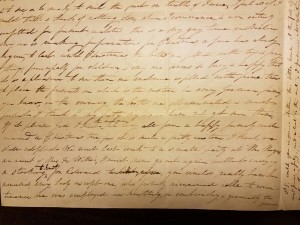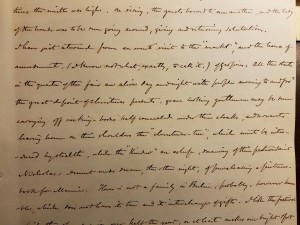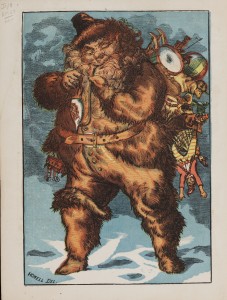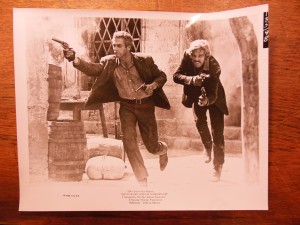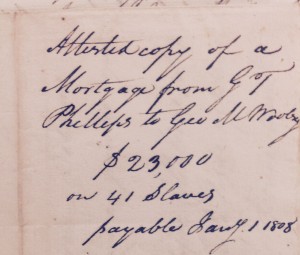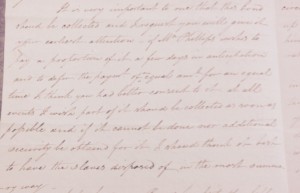
Letter from Henry Obookiah, sent from Cornwall, Connecticut, to Samuel Wells, Jr. of Greenfield, Massachusetts, dated 16 June 1817, page 1. Gustave R. Sattig Collection (MS 1429), Box 1, folder 17. Manuscripts and Archives, Yale University Library.
The following post was written by Judith A. Schiff, Chief Research Archivist, Manuscripts and Archives.
In 2020, the Hawaiian Mission Houses Historic Site and Archives (HMH) in Honolulu will celebrate the Bicentennial of its founding, by the American Board of Commissioners for Foreign Missions (ABCFM), to bring “literacy, Christianity, constitutional government, polyphonic music, and Western medicine” to Hawaii. The first anniversary program was held in Connecticut in June 2017, the Bicentennial of the founding of the Foreign Mission School in Cornwall, CT. Its establishment was inspired by the amazing life experiences of a young Hawaiian prince, Obookiah, who arrived in New Haven in 1809 and was educated by Yale alumni, students, and President Timothy Dwight, a co-founder of the ABCFM. After attending the program in Cornwall, Obookiah’s Hawaiian family descendants visited three Yale special libraries on June 20, to examine and discuss original manuscripts and publications by and relating to Obookiah and the early missionaries in Hawaii. Christopher Cook of Kauai, author of The Life of Henry Obookiah, accompanied the family and is coordinating the bicentennial programs honoring the missionaries’ landing in Hawaii in 1820.
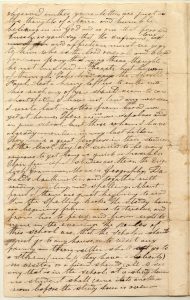
Letter from Henry Obookiah, sent from Cornwall, Connecticut, to Samuel Wells, Jr. of Greenfield, Massachusetts, dated 16 June 1817, page 2. Gustave R. Sattig Collection (MS 1429), Box 1, folder 17. Manuscripts and Archives, Yale University Library.
After a period marked by Hawaiian royal family power wars and island unification in the late 18th and early 19th century, a young prince, Opukahaia, in America Henry Obookiah, became the only survivor of his immediate family. In 1808, he swam out in Kealakekua Bay of Hawaii Island, the Big Island, to greet a China Trade ship. The captain of the brig Triumph was Caleb Brintnall from New Haven, Connecticut. Brintnall liked the boy and brought him along, with the permission of Obookiah’s relatives, on his long sealing voyage. Russell Hubbard (Yale BA 1806) was on board and tutored Obookiah. After sailing east to Mexico to hunt seals, then west to China to trade skins for goods, they continued west around the world to New York to sell the full cargo of China goods. Not long after the ship returned to New Haven in the late summer of 1809, Edwin Welles Dwight (Yale BA 1809) found Obookiah sitting on the steps of a Yale building and weeping “because nobody gives me learning.” Edwin took him to President Timothy Dwight (the Elder), a distant relation, who took him into his home and educated him privately in secular and religious subjects. In 1810, President Dwight became a founder of the ABCFM and a major force in the first American society to establish missions outside the United States. A microfilm of the ABCFM records at Harvard is held by the Yale Divinity School Library.

Letter from Henry Obookiah, sent from Cornwall, Connecticut, to Samuel Wells, Jr. of Greenfield, Massachusetts, dated 16 June 1817, page 3. Gustave R. Sattig Collection (MS 1429), Box 1, folder 17. Manuscripts and Archives, Yale University Library.
Obookiah moved on to other New England schools, studying to become a Christian missionary, and inspired the founding of the Foreign Mission School in Cornwall, Connecticut, known as the Cornwall Indian School, in 1817. The most important Obookiah document at Yale is a long original personal letter describing the life and studies at the Indian School. It is the only currently well-known original manuscript letter in his hand. A transcription and link to a PDF of the letter is available at the end of this article. The original is in the Gustav Reinhold Sattig Collection (MS 1429), Manuscripts and Archives, Yale University Library.
Sadly, Obookiah died from typhus in 1818, not long after the school opened. His memoirs, edited and published by Edwin Dwight continued to inspire college and theological students to become missionaries. The school thrived until 1826, when it closed largely due to the concerns raised when the marriages of two Cornwall girls with Cherokee students became known. In 1993, in connection with the commemoration of the 175th anniversary of his death, the remains of Obookiah were exhumed from his grave in Cornwall and returned to Hawaii. The Records of Reuben A. Holden, Secretary of Yale University (RU 19) in Manuscripts and Archives include correspondence and printed matter relating to the 150th anniversary (see Series III, Box 275, folder 944).
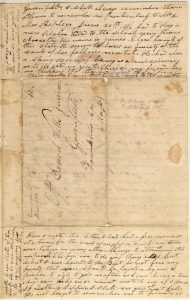
Letter from Henry Obookiah, sent from Cornwall, Connecticut, to Samuel Wells, Jr. of Greenfield, Massachusetts, dated 16 June 1817, page 4. Gustave R. Sattig Collection (MS 1429), Box 1, folder 17. Manuscripts and Archives, Yale University Library.
In the year after Obookiah’s death the first missionary ship sailed for Hawaii, led by Asa Thurston (Yale BA 1816) and Hiram Bingham (Yale Hon. 1819). A month before their embarkation from Boston on October 23, the missionary board decreed that no unmarried men could serve in Hawaii. This proved no obstacle to Asa and Hiram, who within a few weeks met and married professional women teachers dedicated to their cause. A Yale sophomore, Samuel Whitney, was so motivated that with the permission of the faculty he joined the mission. The Hawaii venture thrived, and, with the blessing of Yale President Jeremiah Day, a second missionary ship sailed from New Haven in 1822, including Joseph Goodrich (Yale BA 1821). The papers of Hiram Bingham I, in the Bingham Family Papers (MS 81) in Manuscripts and Archives, provide important documentation on the first settlements, their development, and their contributions to the religious, educational, and cultural life of the Hawaiian Islands.
Transcript of a letter from Henry Obookiah to Samuel Wells, from MS 1429, Box 1, folder 17:
Cornwall June 16th, 1817
My dear sir,
Again, I take my pen at this moment as to embrace this opportunity in writing. Indeed, on this very day I received a most affectionate letter, but when I came to unseal it, lo, it was from my dear beloved friend Mr. S. Wells! How, or what answer can I give for it! Though we were commanded to “give the glory to God in the highest, and on the Earth there is a peace and good will towards men.” Yes, my dear friend, I received your letter with a thankful heart; I am rejoice[d] to hear that you have still, a lively thought, concerning the great things of Eternity. O that may our thought sand hearts, be united together in the fear of God and in the love of the Lord Jesus; to whom you spoke well of. Indeed my dearest friend, we are in a great debt, both to God and the Son Jesus Christ; we have owed them ten thousands of talens [talents?]; alas! How would we repay for all? Notwithstanding: the greatness of our due to God and for all his goodness and kindness towards us, yet we could easily repay it by giving up ourselves to him; for he does it not wishes for ours but us: for thus as it is written, “my son, give me thine heart, and let thine eyes observe my ways.” Your observations which you observed in this your letter, are just as the thoughts of a true and humble believer in God and as one that fear God. Surely, as you say that the supreme love and affection, must we give to him who is the lord over all and blessed forever. Pray that may these thoughts be not mislaid in the heart, but beware of them all. “Take heed,” says the Apostle Paul, “lest a being left us to enter into his nest, any of you should seem to come short of it.” – I have not heard any news since I wrote last, neither from broad nor yet at home. There are no more scholars added to our school, but those whom I have already mentions in my last letter. They make a great progress in their studies, at the least, they all seemed to be very anxious to get long as quick as possible. Their principal studies are these, the English Grammar, Morse’s Geography, Daboll’s Arithmetic, and together with reading, writing, and spelling. About four of them are just beginning to read in the spelling-books. The study hours are beginning from nine to twelve, and from two to five, and from eight to nine in the evening. The rules of the school are, that, the scholars should not go to any house, or to visit any family in town; neither shall go to a store – , (unless they have a liberty) no visitor or a friend should call to see any that is in the school, at a study hour, no student shall come into another’s room before the study hour is over. Every student may take part in laboring each two ½ days in a week; two one at a time. This seems to be very important to us all, as well as to learn to read and write; but some of these youths with me, are very little acquaintance with farmings business, and so that they are not delight in them. The most part of them are understand about the sailing business. Since I have received your letter, they had for curiosity of knowing it, or the person from whom the letter was sent, I told them from one of my friends at the place where I was kindly treated by them; they asked me further. They were very much pleased with the letter, supposed that you as a friend of Christ, and as a true believer in God, by what you spoke well of; both of Christ, and as a true believer in God, by what you spoke well of; both of Christ and his character. To whom I answered, that I had a strong for you, and that you may be as a fellow traveler through the journey of this wilderness World. O that we both may meet at the presence unknown to each other in the Eternal world above; where sin never enters there! Let us not neglect the principal duty, which we owe to the omnipotence God, that is to love him with our hearts, souls, and strength, or at least to pray without ceasing. With this, I must leave you my dear friend, in hand of God, look to him to receive further instruction – and to know his holy character and perfection.
Remember me in your prayers.
With yours,
Henry Ob.
The following are written on the sheet that bears the address of the recipient:
Greenfield: I shall always remember them. Please to remember me particularly to Mr. & Mrs. Repley; June 20th. We had today a new scholar added to the school’s very pious character. His name is James Elyes, formerly of this state. He seems to have an anxiety of the souls of his fellow’s mortal. He had also a strong desire of being as a missionary as to do good in world. Three of my friends here were thinking that they had joined the Lord Jesus in their hearts’ Those that lately came to this country.
When I wrote this letter, I had but a few moments at a time; for the want of an opportunity. My time was taken in many others things to attend, and it is impossible for me to do anything else but what I was bound to, do. But, be not fear my friend, that you should be, forgotten by me; I prefer to write to you as often as I can have a time. And you like wise must, write to me if I don’t. If nothing happens I shall see you at next fall. Do not forget to remember me to friends in …
George Sandweth? He said he met you; one who used to live with Esqr. Field of Enfield. He is one that seems to be very anxious for his poor soul. H.O.
Bibliography of materials in the Yale University Library relating to Henry Obookiah and early missionaries to Hawaii
In Manuscripts and Archives, Sterling Memorial Library:
- Henry Obookiah. Letter to Samuel Wells. 1817 Jun 16. Gustav Reinhold Sattig Collection (MS 1429), Box 1, folder 17.
- Bingham Family Papers (MS 81), Series I. Hiram Bingham I, 1811-1920. Boxes 1 – 2. Includes correspondence and writings by and about Hiram Bingham (1789-1869) and his wife Sybil Moseley Bingham (1792-1848). Writings of Sybil M. Bingham consist of her journal, 1811-1847, including photostatic and typewritten copies of extracts, and her manuscript, “Select Hawaiian Phrases.”
- Reuben A. Holden, Secretary of Yale University, Records (RU 19), Series III. University Secretary: Subject File Special Events. Box 275, folder 944. Obookiah Ceremony, 1968, contains correspondence and printed matter relating to the exhumation of the remains of Obookiah from his grave in Cornwall, CT and return for burial in Hawaii.
In the Beinecke Rare Book and Manuscript Library:
In the Yale Divinity Library:
- David M. Stowe Papers (Record Group 156), Box 101, folder 464. A subject file on Obookiah containing materials dated 1967-1995.
- Gerald H. Anderson Papers (Record Group 166), Box 20, folder 2123. An articles file containing materials on Obookiah, no dates given.
- Beecher, Lyman. Sermon Delivered at the Funeral of Henry Obookiah (New-Haven : Printed at the office of the Religious intelligencer, 1818).
- Several editions of Dwight, E.W. (Edwin Welles). Memoirs of Henry Obookiah, a native of Owhyhee and a member of the Foreign Mission School, who died at Cornwall, Conn, Feb 17, 1818, aged 26 years.
- One hundred and fiftieth anniversary of the death of Henry Opukahaia (Obookiah): held in Cornwall, Connecticut ; Honolulu, Hawaii ; and Napoopoo, Kealakekua ; Sunday, February 18, 1968 A. D.
- Damon, Ethel M. Romance of reality : a historical play in two acts / written by Ethel Moseley Damon (Honolulu, Hawaii : [Punahou Academy], 1920).
- Obookiah, Henry. A short elementary grammar of the Owhihe language / attributed to Henry Obookiah (Honolulu : Manoa Press, 1993).
- Several editions of Maurer, Oscar E. How the gospel came to Hawaii.
- Wolfe, Edith. Story of Henry Obookiah/Opukahaia / by Edith Wolfe (Honolulu : Woman’s Board of Missions for the Pacific Islands, 1974).





